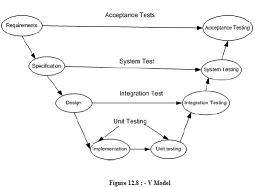What are the five levels in CMMI
What are the five levels in CMMI?
✍: Guest
There are five levels of the CMM. According to the SEI,
Level 1 – Initial
At maturity level 1, processes are usually ad hoc and the organization usually does not
provide a stable environment. Success in these organizations depends on the competence
and heroics of people in the organization and not on the use of proven processes. In spite
of this ad hoc, chaotic environment, maturity level 1 organizations often produce products
and services that work; however, they frequently exceed the budget and schedule of their
projects.
Maturity level 1 organizations are characterized by a tendency to over commit, abandon
processes in the time of crisis, and not be able to repeat their past successes again.
Level 2 – Repeatable
At maturity level 2, software development successes are repeatable. The organization
may use some basic project management to track cost and schedule.
Process discipline helps to ensure that existing practices are retained during times of
stress. When these practices are in place, projects are performed and managed according
to their documented plans.
Project status and the delivery of services are visible to management at defined points
(for example, at major milestones and at the completion of major tasks).
Basic project management processes are established to track cost, schedule, and
functionality. The necessary process discipline is in place to repeat earlier successes on
projects with similar applications.
Level 3 – Defined
At maturity level 3, processes are well characterized and understood, and are described in
standards, procedures, tools, and methods.
The organization’s set of standard processes, which is the basis for level 3, is established
and improved over time. These standard processes are used to establish consistency across
the organization. Projects establish their defined processes by the organization’s set of
standard processes according to tailoring guidelines.
The organization’s management establishes process objectives based on the organization’s
set of standard processes and ensures that these objectives are appropriately addressed.
A critical distinction between level 2 and level 3 is the scope of standards, process
descriptions, and procedures. At level 2, the standards, process descriptions, and procedures
may be quite different in each specific instance of the process (for example, on a particular
project). At level 3, the standards, process descriptions, and procedures for a project are
tailored from the organization’s set of standard processes to suit a particular project or
organizational unit.
Level 4 – Managed
Using precise measurements, management can effectively control the software
development effort. In particular, management can identify ways to adjust and adapt the
process to particular projects without measurable losses of quality or deviations from
specifications.
Sub processes are selected that significantly contribute to overall process performance.
These selected sub processes are controlled using statistical and other quantitative
techniques.
A critical distinction between maturity level 3 and maturity level 4 is the predictability of
process performance. At maturity level 4, the performance of processes is controlled
using statistical and other quantitative techniques, and is quantitatively predictable. At
maturity level 3, processes are only qualitatively predictable.
Level 5 – Optimizing
Maturity level 5 focuses on persistently improving process performance through both
incremental and innovative technological improvements. Quantitative processimprovement
objectives for the organization are established, continually revised to reflect
changing business objectives, and used as criteria in managing process improvement. The
effects of deployed process improvements are measured and evaluated against the
quantitative process-improvement objectives. Both the defined processe
2007-10-30, 7110👍, 0💬

